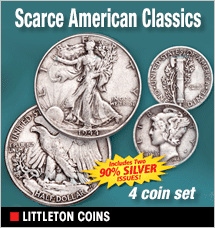
My clever son is totally wired into every aspect of cutting-edge technology; that's obviously what prompted him to present me with a 55-inch flat-screen TV for my birthday – wow! Mounted on the wall, the thin TV is almost invisible; all you really see is the expansive video image.
Upon receiving the gift, I properly discarded my vintage RCA Victor "television set." Al Gore would be extremely pleased to learn that most components from the mammoth TV have already been melted down and flowed into the pool of raw material used to manufacture As-Seen-on-TV products. At any rate, now that I've lost my old wooden TV forever, I've come to realize all that it meant to me.
The old TV was housed in a huge mahogany cabinet that had doors on the front. I found the ritual of polishing all that wood to be very therapeutic. A plastic gondola with tiny imbedded lights sat on top of the cabinet. My friends always poked fun at that tacky souvenir from Venice, but it adorned the TV much like the crown on a king.
Of course, the top of the cabinet became a bit crowded when I had to buy a converter box to receive UHF channels in 1959, and even more crowded when I had to add a digital-to-analog converter box in 2009. Had I kept the TV, I suppose I would have also needed a "black box" for 3-D broadcast reception in 2025, and then yet another box for reception of hologram broadcasts towards the end of the century.
I was fond of the old glass tube technology despite the ghost signals and the snow in the picture when reception was poor. I actually enjoyed having a hand in optimizing the analog picture received over the airwaves. I fine-tuned the channel frequency, adjusted the rabbit ears for the strongest signal, and repositioned the bow tie antenna to receive UHF channels. And when the picture would start rolling, I'd smack the TV cabinet hard (always with an open hand) to shake up the electronics just enough to stabilize reception.
It's probably true that my new state-of-the-art TV is a marvel of advanced technology. My wife even made me take a community college course so I could operate the blasted thing. Obviously, that's done remotely from my recliner now. No more getting up to adjust the volume, change channels, or reposition the rabbit ears; no wonder obesity is so rampant!
Yes, my life in the early years was much simpler with the old TV; it didn't try to brainwash me or make me suffer information overload. Actually, I'm somewhat comforted by the fact that researchers are busy developing new TV broadcast software driven by artificial intelligence. They'll use that technology to establish a direct connection with my brain so my thought patterns and living activity can be monitored. Once the interface is completed, TV broadcasters will start feeding me personally tailored viewing content and advertising. Thus, my life will again become as simple as it once was.
Fortunately, those researchers and broadcasters are making excellent progress in their efforts to establish a direct link to my mind. So, it shouldn't be too awful long before I completely forget I ever had that wonderful wooden TV.
Liburdi resides in the Charlotte, N.C. metro area. His recent book, "Italian-American Fusion: Italy's Influence on the Evolution of America," is available at internet bookstores and on the Kindle e-Reader.



























































